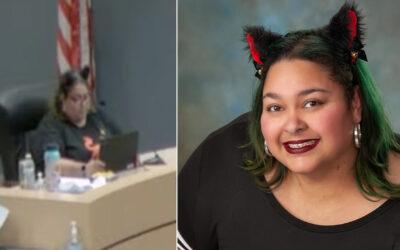An estimated one million children sit frozen in the United States, either waiting to be defrosted and allowed to develop, or simply “left over” from their parents’ successful attempts to have children through in-vitro fertilization (IVF). About five to seven percent of these frozen human embryos are thought to have been abandoned, though that number is higher at some individual fertility clinics. Their parents, once desperate to have children of their own, now have as many as they want and don’t know what to do with the others they created. As a result, those children are left in a perpetual frozen state, some since the 1980s, as the world moves on around them. Now, even fertility clinics are unsure of what to do about the embryos stuck in limbo.
“Your goal in the beginning is just to get pregnant,” explained Sara Raber of Long Island, New York — a state where insurance coverage for IVF could soon be mandated. Therefore, she told the Associated Press, creating an abundance of embryos increases the chances of a successful pregnancy. But when the couple has birthed their desired number of children, they no longer know what to do with the others who were not so lucky.
“You’re making a conscious decision not to have a baby anymore,” said Raber’s husband Howard. “That’s what makes it hard.” Originally, the Rabers agreed to donate their leftover embryos to research, but Raber couldn’t bring herself to sign the paperwork.
READ: ‘Consider a trade?’: IVF mom tries to swap embryo daughter for a boy
The problem of inconsistent regulatory laws
Around the world, laws are extremely varied when it comes to assisted reproduction technology like IVF. In the UK, embryos can only remain frozen for 10 years. In the United States, there is no time limit. While other countries have strict rules regarding IVF, the United States has virtually none. People can choose the sex of their child, hire a surrogate, use anonymously donated sperm, and screen for genetic traits like preferred eye color — all legal in the United States. A survey published by the Journal of Assisted Reproduction and Genetics found that about 73 percent of U.S. fertility clinics offer gender selection. Couples can also test their embryos for traits they don’t want them to have, like inherited diseases, and then destroy the ones who fail to be perfect.
California fertility specialist Jeffrey Steinberg says parents are becoming more demanding as they attempt to build perfect children. “People call up asking for all kinds of things: Vocal ability, athletic ability. Height is a big one. I have a lot of patients who want tall children,” he told The Washington Post.
Once their desired children are born, couples with excess embryos have choices to consider – including donating their leftover embryos to research, donating them to an infertile couple, keeping them frozen indefinitely, discarding them, or transferring them to the mother’s uterus during a time in her cycle when she would be unlikely to become pregnant.
The problem of abandonment
While the Rabers are still in contact with their fertility clinic, some couples choose to essentially disappear and cut contact. They literally abandon their embryos, stop paying storage fees, and leave it up to the clinic to decide what to do with these once yearned for, now unwanted children.
Jenny Sammis, who can’t decide what to do with the almost one dozen frozen embryos she still has, told the AP that a friend struggled so horribly with the decision that she moved away. For her friend, she said, running away “was her way of dealing with it.”
Dr. Craig Sweet runs a fertility clinic in Florida, and told the AP that about 18 percent of his clinic’s frozen embryos have been abandoned by their parents – some for as long as 25 years. In 2017, Tina and Benjamin Gibson adopted an embryo frozen for over 24 years — just a year younger than Tina was at the time. Emma was born weighing six pounds eight ounces on November 25, 2017. She had been frozen since October 14, 1992. The couple could not have children naturally and opted for embryo adoption.
Another issue is divorce. Couples, like actress Sofia Vergara and Nick Loeb, split. One wants to use the embryos and the other doesn’t. That’s when legal battles ensue over the fate of their embryos.
“It’s a real dilemma for these clinics,” Rich Vaughn, a lawyer who headed the American Bar Association’s assisted reproduction committee for years explained. “We don’t quite know what to do with them and everyone’s afraid to act.” Clinics don’t want to be sued if a couple eventually returns and wants their embryos only to find out the clinic destroyed them. Eventually, however, clinics are going to run out of time and space, but that’s not their only problem.
READ: Michelle Obama reveals miscarriage, says daughters conceived via IVF
The problem of consumerism
In March 2018, two fertility clinics had storage bank malfunctions, killing the frozen embryos and making frozen eggs unusable. Families who were paying up to $500 a year to store their children were devastated. Many took legal action. Three cancer survivors got Gloria Allred to represent them. Allred argues that the fertility clinic violated the federal Magnuson-Moss Warranty Act for consumer products.
“[…] this industry is unregulated,” Allred told CNN. “I think the FDA should be regulating as medical devices, which they are not. Regulation is not a dirty word if it can ensure consumer safety.”
The problem with IVF and fertility clinics and frozen embryos lies in that one word: consumer. If the parents are the consumers, then their children are nothing more than products, which leads to the question, “are frozen embryos living human beings or are they products to buy and sell?”
Sylwia Sierko, who lost five frozen embryos when a tank malfunctioned at University Hospitals in Ohio, knows that her embryos were her children. “It’s like we lost five of our kids,” Sierko told Cleveland.com. “I want to bury them. I want to bury my kids.”
Kate Plants, who also lost five embryos, held a memorial for them with other parents, a move that was highly criticized by people who don’t feel that an embryo is of equal value as a born child and therefore the loss of embryos shouldn’t be treated the same.
Efthimios Parasidis, an associate professor of law and public health at Ohio State University said that Ohio includes frozen embryos under its definition of “unborn child,” however the fertility clinic will not face criminal liability due to the loss of life.
“In Ohio because criminal penalties may apply only to harm caused to an unborn child in the womb, it will be challenging to bring criminal charges against a clinic for harm caused to frozen embryos,” he explained.
That isn’t stopping Wendy and Rick Penniman from seeking damages from the loss of their embryos, saying that University Hospitals is treating the embryos as if they were property, not human beings. However, University Hospitals attorneys say that the couple signed paperwork stating the embryos are their “sole property” and “Ohio law does not recognize the embryo as a ‘distinct human entity with rights.’”
Conclusion
In the U.S., IVF is a $5.8 billion industry. As the number of frozen embryos grows, they will be lives stuck in limbo for the unforeseeable future unless someone decides they want them. Just like with the abortion industry, millions of dollars are generated based on the devaluing of children. Human beings are treated as products that parents can design, build, and destroy to satisfy their own desires.
“Like” Live Action News on Facebook for more pro-life news and commentary!
The post ‘Leftover children’: Three tragic problems with in vitro fertilization appeared first on Live Action News.
Go to Source
Author: Nancy Flanders



